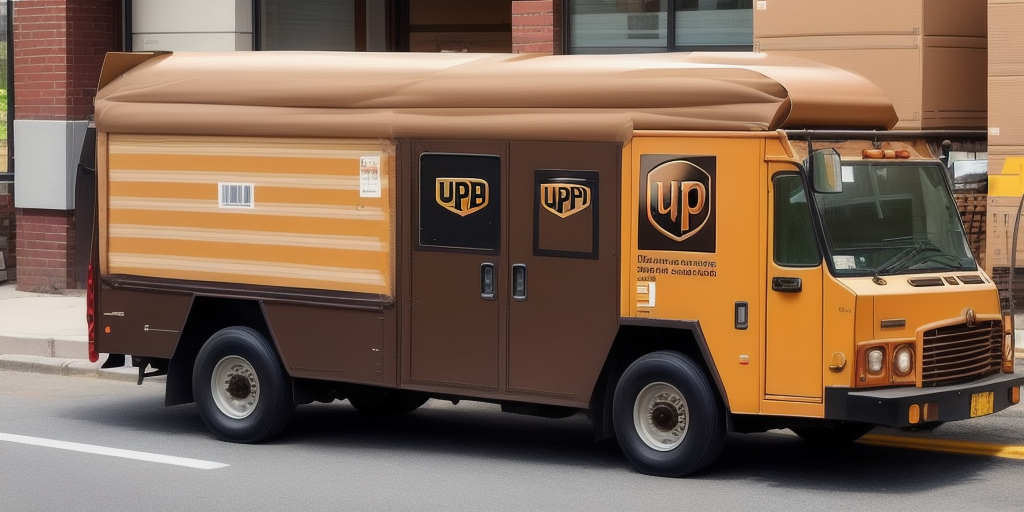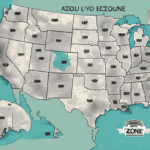Understanding UPS Small Package Shipping Rates: A Comprehensive Chart
If you're an e-commerce business or frequently send packages, you know the importance of finding the most cost-effective shipping solution. UPS Small Package Shipping Rates play a crucial role in determining your shipping expenses. In this comprehensive guide, we'll provide you with a detailed overview of UPS Small Package Shipping Rates, including how they vary based on size, weight, domestic and international shipments, and other factors. We’ll also share valuable tips on how to save money and negotiate better rates with UPS.
What are UPS Small Package Shipping Rates?
UPS Small Package Shipping Rates are the standard fees that UPS charges for the transportation of packages within the United States and internationally. These rates are based on various factors, including package weight, dimensions, delivery location, and the level of shipping service you choose. For more detailed information, you can refer to the UPS shipping rates on the official UPS website.
It is important to note that UPS Small Package Shipping Rates are subject to change based on market conditions and other factors. Additionally, UPS offers various discounts and promotions throughout the year, which can help you save money on your shipping costs.
When shipping with UPS, you can also take advantage of their advanced tracking and delivery options. This includes the ability to track your package in real-time, receive delivery notifications, and even reroute your package to a different address if needed.
Why is it Important to Understand UPS Small Package Shipping Rates?
By understanding UPS Small Package Shipping Rates, you can make informed decisions when it comes to choosing a shipping carrier and services. Knowing UPS shipping rates can also help you estimate shipping costs and set pricing for your products.
Additionally, understanding UPS Small Package Shipping Rates can help you identify potential cost-saving opportunities. For example, you may be able to take advantage of discounted rates for high-volume shipments or by using certain UPS services. By understanding the rates and available options, you can optimize your shipping strategy and save money in the long run.
How Do UPS Small Package Shipping Rates Vary by Package Size and Weight?
UPS Small Package Shipping Rates vary based on package weight, size dimensions, and the origin and destination locations. Generally, the heavier and bulkier your package, the higher the shipping rate. Additionally, UPS uses dimensional weight pricing, which charges based on the size of your package rather than its actual weight. So, if you have a lightweight, bulky package, you may end up paying a higher rate than you anticipated.
It's important to note that UPS also offers various shipping options, such as ground, air, and international, which can affect the shipping rate. Ground shipping is typically the most affordable option, while air and international shipping can be more expensive. Additionally, UPS offers discounts for businesses and frequent shippers, so it's worth exploring these options if you plan to ship packages regularly.
The Difference Between Domestic and International UPS Small Package Shipping Rates
Domestic and international shipping rates differ based on the destination country's customs rules and regulations. UPS has different shipping rates for domestic and international packages, so you'll need to factor in these differences when calculating your shipping costs.
When shipping domestically, UPS offers a variety of shipping options such as ground, 2nd day air, and next day air. These options are not available for international shipping, where UPS offers only a few options such as standard, worldwide expedited, and worldwide express. Additionally, international shipping rates are generally higher than domestic rates due to the additional costs associated with customs clearance and international regulations.
It's important to note that when shipping internationally, you may also be responsible for paying import taxes and duties. These fees are not included in the shipping cost and can vary depending on the destination country and the value of the package. It's important to research these fees before shipping internationally to avoid any unexpected costs.
What Factors Affect UPS Small Package Shipping Rates?
Several factors affect UPS Small Package Shipping Rates, including package size, weight, delivery location, delivery speed, and specific shipping services you select. Additionally, the shipment’s value, declared value, and the destination country’s customs laws can impact the shipping rates significantly.
It is important to note that UPS also offers discounts for certain types of shipments, such as those sent by businesses with high shipping volumes or those that are part of a loyalty program. These discounts can significantly reduce the overall shipping cost, making it more affordable for businesses to send packages through UPS. Additionally, UPS offers various packaging options, including eco-friendly materials, which can also impact the shipping rates. By selecting the appropriate packaging and taking advantage of available discounts, businesses can save money on their UPS Small Package Shipping Rates.
Understanding the Various UPS Shipping Options and How They Affect Rates
UPS Small Package Shipping Rates vary based on the type of service you select. The shipping options that affect rates include UPS Ground, UPS 2nd-day air, UPS Next Day Air, and UPS Worldwide Expedited. For example, choosing a faster delivery option will come with a higher shipping rate.
It's important to note that the weight and dimensions of your package also play a role in determining the shipping rate. UPS charges based on the actual weight or dimensional weight, whichever is greater. Dimensional weight is calculated by multiplying the length, width, and height of the package and dividing by a dimensional weight divisor.
Another factor that can affect UPS shipping rates is the destination of your package. Shipping to a residential address may come with additional fees compared to shipping to a commercial address. Additionally, shipping to certain remote or hard-to-reach areas may also result in higher shipping rates.
How to Calculate Your UPS Small Package Shipping Rates Using the Comprehensive Chart
To calculate UPS Small Package Shipping Rates, you must first determine your package's size and weight. Then, use UPS's online calculator, or refer to their comprehensive chart. The chart includes various package sizes and weights, domestic and international shipping rates, and shipping services.
It's important to note that UPS Small Package Shipping Rates may vary depending on the destination and the type of package being shipped. For example, shipping a fragile item may require additional packaging materials and result in a higher shipping rate. Additionally, UPS offers various shipping options such as ground, air, and express, which may also affect the shipping rate. It's recommended to review the comprehensive chart and consider all factors before selecting a shipping option.
Common Mistakes to Avoid When Estimating Your UPS Small Package Shipping Rates
- Underestimating Shipping Costs: Especially for lightweight, bulky packages. Remember to factor in the dimensional weight pricing, as you may end up paying more than anticipated.
- Inaccurate Measurements: Ensure that you accurately measure and weigh your package to calculate shipping rates correctly.
- Ignoring Shipping Destination: Shipping rates can vary depending on the distance and location of the recipient. Make sure to check the shipping rates for different zones and regions to avoid any surprises in the final cost.
- Not Utilizing Discounts and Promotions: UPS offers various discounts for small businesses and frequent shippers. Ensure you check for any ongoing promotions or discounts that you may be eligible for to save on shipping costs.
Tips for Saving Money on Your UPS Small Package Shipping Rates
One of the easiest methods for saving on UPS Small Package Shipping Rates is to negotiate a lower rate with UPS. Other methods to save include opting for UPS Ground, using UPS shipping software to automate your shipping process, and taking advantage of UPS discounts for frequent shippers. Packaging your packages appropriately and reducing any unnecessary weight can also help reduce shipping costs.
Another way to save on UPS Small Package Shipping Rates is to consider using alternative shipping carriers. While UPS may be a popular choice, other carriers such as FedEx, DHL, and USPS may offer lower rates for certain package sizes and destinations. It's important to compare rates and services offered by different carriers to find the best option for your shipping needs.
How to Negotiate Better Rates with UPS for Small Package Shipments
To negotiate better UPS Small Package Shipping Rates, understand your shipping volume and leverage that information when speaking to a UPS sales representative. Be prepared to show data on your shipment history, your history with UPS, and the potential long-term business. Be open to exploring and testing new shipping methods while monitoring costs.
Another important factor to consider when negotiating better rates with UPS is the timing of your shipments. If you have flexibility in your shipping schedule, try to avoid peak shipping seasons or days to reduce costs. Additionally, consider consolidating your shipments to reduce the number of packages and overall shipping costs.
It's also worth exploring UPS's various shipping options, such as ground, air, or international shipping, to find the most cost-effective solution for your business. Don't be afraid to ask for discounts or promotions that may be available for your specific shipping needs. Remember, the goal is to find a mutually beneficial agreement that benefits both your business and UPS.
Understanding the Impact of Fuel Surcharges on Your UPS Small Package Shipping Rates
Fuel surcharges significantly impact UPS Small Package Shipping Rates, as these surcharges depend on the fuel price index. Typically, UPS adjusts fuel surcharges weekly based on the fuel price index. If fuel prices increase, expect fuel surcharges to rise, thereby increasing your total shipping costs.
Frequently Asked Questions About UPS Small Package Shipping Rates
Here are some of the most commonly asked questions about UPS Small Package Shipping Rates:
- What is dimensional weight and how does it impact shipping rates?
- Can I get a discount on UPS Small Package Shipping Rates?
- What's the difference between UPS Ground and UPS Next Day Air?
- How do I estimate my shipping costs accurately?
- Are there any additional fees other than shipping rates?
Comparing UPS Small Package Shipping Rates with Other Major Carriers Like FedEx and USPS
Other major carriers, like FedEx and USPS, offer competitive shipping rates. However, comparing rates across providers can help you determine the best shipping option for your package. You may discover some cost-saving options based on package weight, size, and destination. Consider using online comparison tools or consulting industry reports from sources like the UPS website and FedEx to make informed decisions.
Conclusion: The Importance of Understanding and Managing Your UPS Small Package Shipping Rates for a Successful Shipping Strategy
UPS Small Package Shipping Rates are an essential expense for businesses that send out packages each day. By understanding the various factors that influence these rates, you can determine how to reduce shipping costs and optimize your shipping strategies. Additionally, finding cost-effective shipping solutions can help reduce overall product prices, retain customer loyalty, and improve profitability for your business.






















